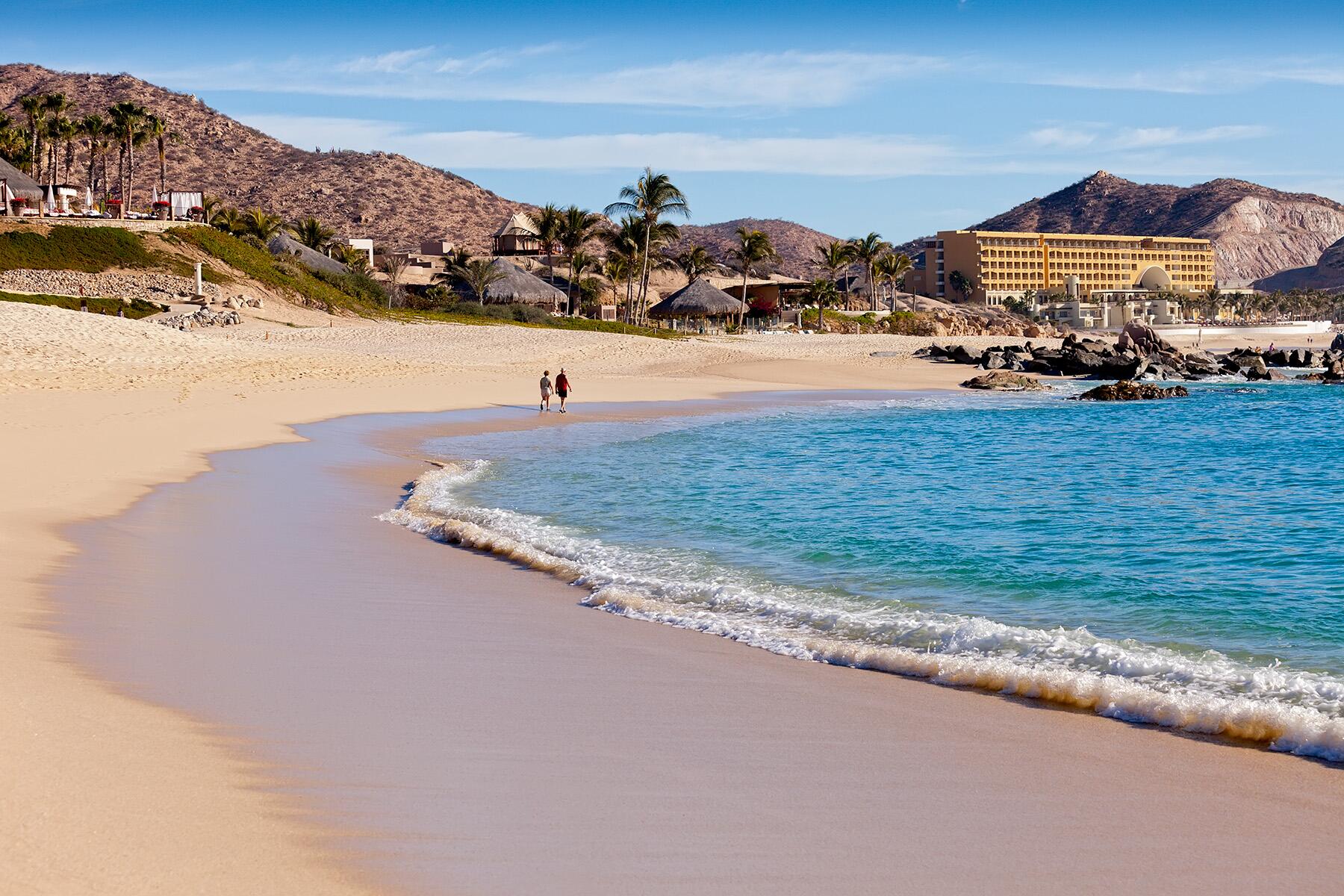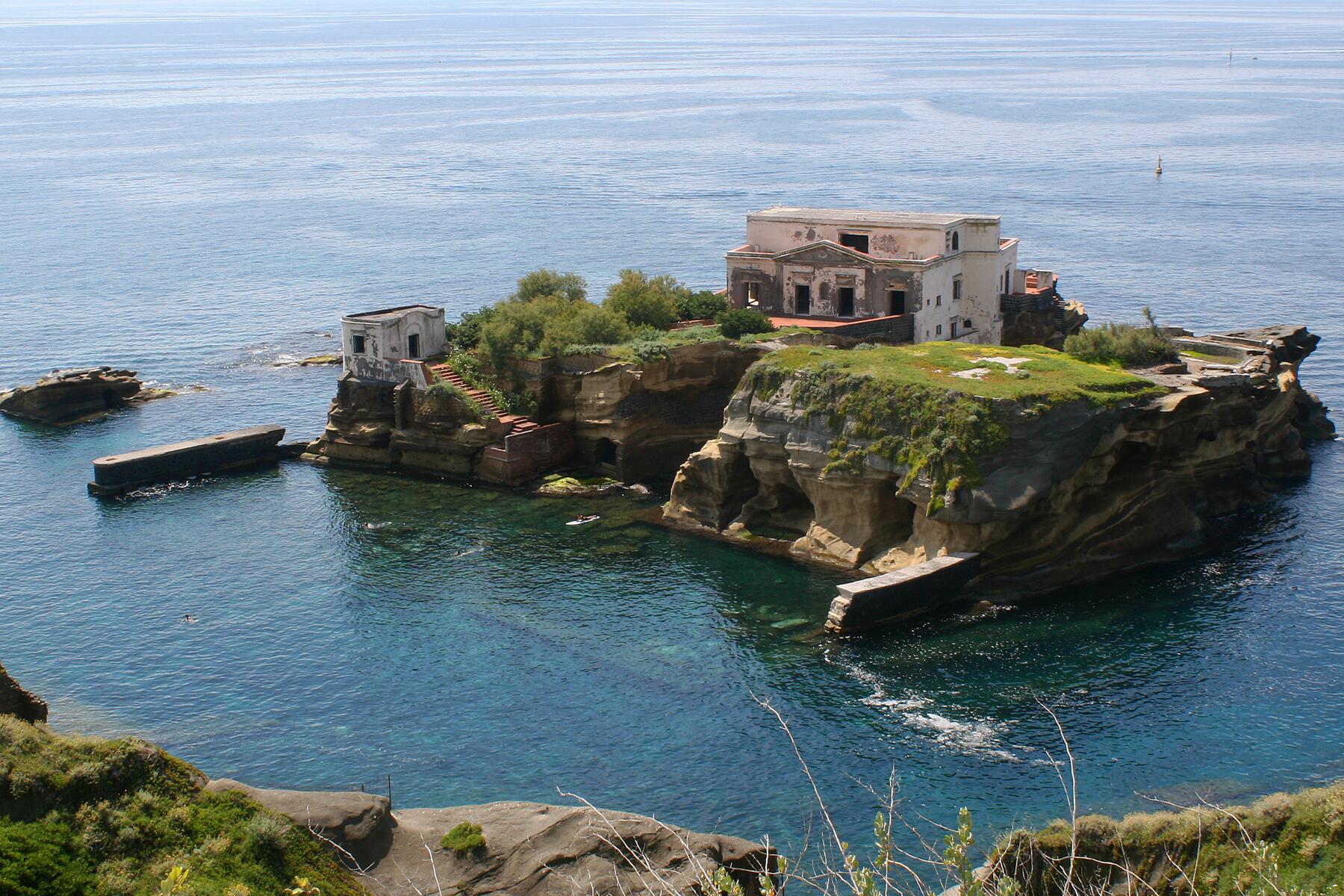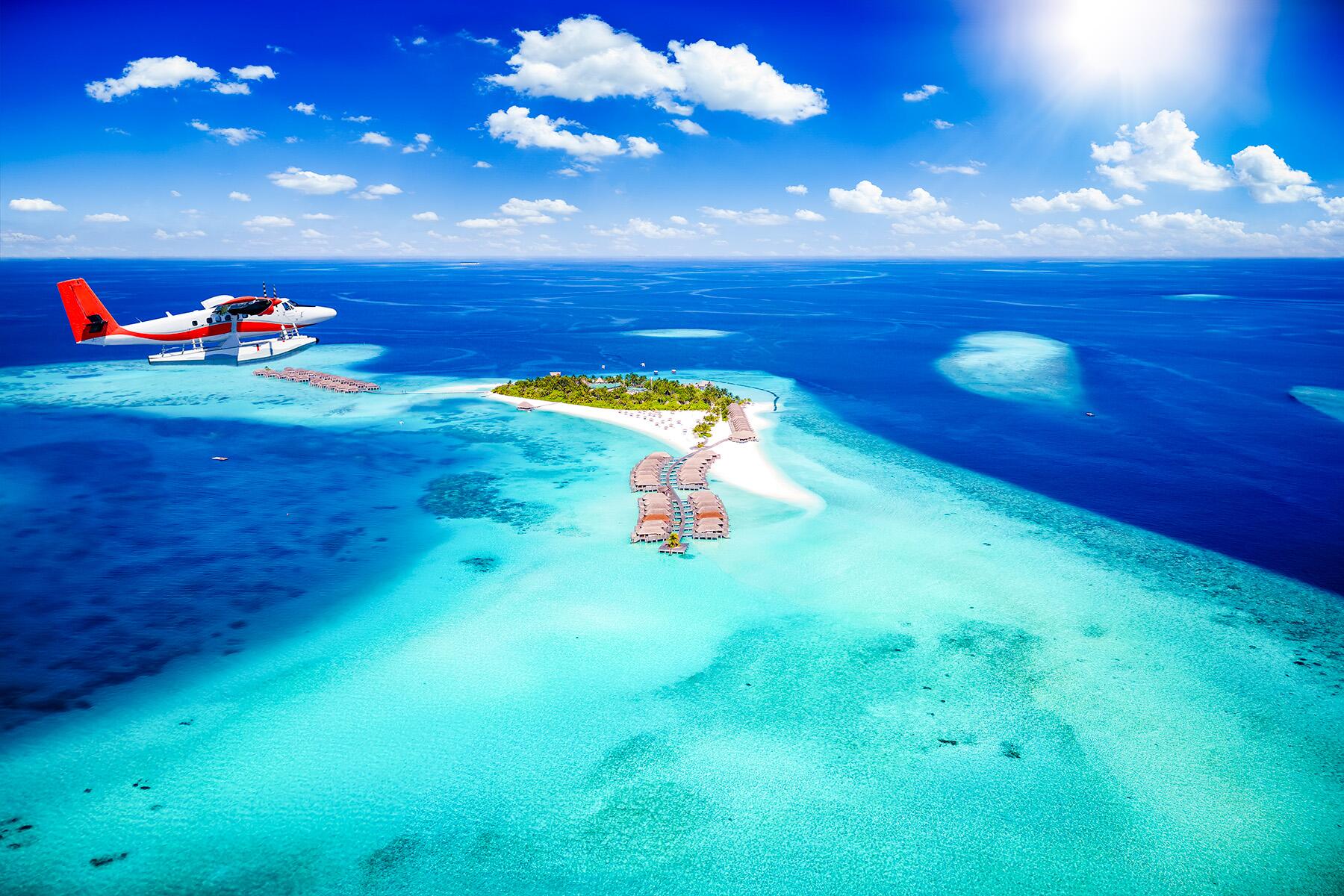Come to Barbados for the beaches, stay for the culture, wildlife, and stellar views.
Barbados is unique. It’s certainly a tropical paradise much like its neighbors in the Eastern Caribbean, but the island country is fairly isolated in the Atlantic Ocean, with its closest neighbor planted 100 miles away. Also, unlike its mountainous, volcanic neighbors, Barbados’ million-year-old accumulation of limestone and coral rock has provided a mostly flat landscape. In addition to its striking geology, Barbados’ history and “British-ness”– the island was under British rule for 340 uninterrupted years–are well worth looking into. You can (and should) learn about plantation life, go deep inside a spectacular limestone cave, and visit a tropical garden (the British love their gardens!), while also taking in the island’s more popular fare—excellent dining, water sports, and lovely local people. You’re sure to enjoy some or all of these 25 suggestions of what to do and see on the island country.
Top Picks for You
Taste the Island’s Favorite Beverage
Rum is the Caribbean drink of choice, and Mount Gay, the world’s oldest rum distillery, has been making the smooth libation in Barbados since 1703. Because sugar was king at that time, there were nearly a dozen sugar-processing factories on the island. Today, just two are in operation and much of the product is exported. Nevertheless, fields of sugar cane still grow around the island’s interior, and Mount Gay is still making fine rum. Take a tour of the Mount Gay Visitors Centre, just north of Bridgetown, to learn about the history of rum-making, the process, and the equipment…and then head for the tasting room.
Swim With the Turtles
Hawskbill and leatherback sea turtles feed and nest in the clear, calm waters along the west coast of Barbados, and a number of tour operators will take you offshore to swim with these marvelous, friendly creatures.
Recommended Fodor’s Video
Party Hardy on a Day or Sunset Cruise
Party boats depart from Bridgetown’s Deep Water Harbour and sail along the island’s west coast, stopping within the marine reserve area for swimming, snorkeling, and an onboard lunch—drinks included! Alternatively, a voyage aboard the pirate-themed Jolly Roger I will thrill the whole family (passengers can also partake in “pirate” activities like walking the plank). In the evening, watching the sun set as you skim along the water can be quite romantic—or just a lovely way to end the day.
Join Locals at Oistins Fish Fry
In the village of Oistins–located on the south coast of Barbados–Friday night means “Fish Fry” for tourists and locals alike. Open-air stalls fill the long strip between the main road and the waterfront, and folks grill fresh fish and barbecue chicken before your eyes. Add in side dishes like rice ‘n’ peas, fries, mac & cheese, yams, and salad and you have a hearty meal for the whole family. Oh, and the music and dancing don’t hurt either!
Dance to Island Music
When night falls, people gravitate to St. Lawrence Gap on the south coast or to Holetown on the west (“Platinum”) coast where bars and clubs can be found aplenty. “The Gap” is a long semicircular road off the main highway lined with hotels, restaurants, and shops, such as Bubba’s Sports Bar, The Old Jamm Inn. In Holetown, 1st and 2nd streets (off the main highway) are lined with restaurants and bars like Red Door Lounge and Duke’s Night Lounge.
INSIDER TIPRagamuffin’s, on 1st Street in Holetown, features a Sunday night Drag Show that spills into the street!
Play a Round of Golf
Time for tee! Renowned for its three superb golf courses, the prestigious Country Club at Sandy Lane welcomes visitors to play on its Old Nine Course and Tom Fazio-designed Country Club Course. (The Green Monkey Course is reserved for guests of the ultra-luxurious Sandy Lane Hotel.) The greens fee for non-guests is $240 (18 holes). As an alternative, the greens fee for an 18-hole (returning nines) round at Barbados Golf Club—a challenging, Ron Kirby-designed public course on the south coast—is $105.
Go Underground at Harrison’s Cave
One of Barbados’s most unique experiences is exploring the subterranean world of Harrison’s Cave, an extensive (2.3 kilometers long) limestone cavern filled with stalactites, stalagmites, a flowing stream, deep pools. You ride through 3 miles of tunnels and open areas—the Great Hall is 15 feet. high—on an electric tram. Expect plenty of “oohs and ahhs” at the sights—and then shrieks when the guide turns off the lights for just an instant to demonstrate how dark it really is.
INSIDER TIPIntrepid visitors can don a helmet and knee guards and trek along nature trails to a natural opening in the cave, entering on hands and knees with only their head amps lighting the way.
Try Windsurfing or Kitesurfing
Silver Sands Beach, which wraps around the southern tip of Barbados, is an ideal windsurfing location, particularly between November and April when winds are strongest. Kitesurfing (or kiteboarding) has also become a popular surfing activity. There’s flat water in the inner lagoon for lessons (or tricks) and waves and high wind off of the outer reef. Whether a first-timer or a confident surfer, head for deAction surf shop right on Silver Sands Beach for lessons and rental equipment.
Immerse Yourself in a Tropical Garden
There’s no shortage of tropical flora in Barbados. Among the horticultural treats are Andromeda Botanic Gardens, high above the Bathsheba coastline on the east coast; Flower Forest, in the Scotland District of central Barbados; and Hunte’s Gardens, midway between the other two gardens and perhaps the most majestic tropical environment of all. All three sites are filled with soaring trees, flowering bushes, and unusual plants. Walking along the pathways, you’ll come upon a strategically placed bench or chair to rest, relax, and commune with nature. Only birdsong breaks the silence.
Take a Hike
Barbados is fairly flat except in the central part of the island around Mt. Hillaby (1,100 ft), the highest point of land. Therefore, the island presents a great place for nature walks, casual hikes, and more strenuous treks. On Sundays, the Barbados National Trust sponsors Hike Barbados: 3-hour “loop” hikes that range from “Stop and Stare” walks (covering 5-6 miles) and medium hikes (8-10 miles) to medium-fast hikes (10-12 miles) and really fast hikes (12-14 miles), all of which are offered early in the morning and late in the afternoon,. The hikes are free, and you’re grouped according to your ability.
INSIDER TIPEach week, the hike begins in a different location on the island; meeting places are posted on the Trust’s website.
Enjoy Panoramic Island Views
Having perspective is a good thing. Back in the 18th century, the British Army manned the Gun Hill Signal Station in the center of the island. From that 700-foot-high perch, the soldiers had a 360-degree view of the island—specifically the south coast—and you can, too. Take in spectacular views of the island’s entire Atlantic (east) coast—looking either south from Cherry Tree Hill or north from East Coast Light at Ragged Point. And from Farley Hill National Park, the sweeping view of the island’s rugged interior landscape will help you understand why they call that area “Scotland.”
Take a “Jeep” Tour off the Beaten Track
The only way to access some of the most intriguing areas in the northeastern part of the island is via 4×4 vehicle, and Island Safari Barbados will take you there. The vehicles are “safari-rigged” Land Rovers, complete with benches in the jeep bed covered by an awning to protect passengers from the blazing sun and occasional tropical spritz. The off-road expedition crosses rugged terrain, goes to remote bays and beaches, and passes through gullies and forest before stopping for lunch; some tours include swim stops.
Dive Deep Without Getting Wet
You won’t need lessons, equipment, or special certification to explore the depths if you go in a submarine. Atlantis Submarine has a 50-foot, 48-passenger mini-sub that dives as far as 150 feet into the briny deep. On the 45-minute voyage, you’ll see colorful fish and sponges and get close to reefs and wrecks; all the while staying dry as a bone.
INSIDER TIPThis is a great family adventure, but kids must be at least 3 feet tall to go aboard.
Explore Underwater Reefs and Wrecks
Scuba divers can swim among 50-plus species of fish and view majestic sea fans and barrel sponges growing in the marine reserve on the west coast of Barbados. On the south coast, in and around Carlisle Bay, there are six shipwrecks to explore and you may even spot cannon balls, anchors, and other items dumped in the sea by 18th-century soldiers and sailors. All told, Barbados has some two-dozen dive sites, and visibility is usually 80 to 90 feet. Good to know: Dive shops on either coast offer lessons, certifications, rental equipment, and dive trips that include hotel transfers.
Catch a Big Fish
High season in the Caribbean is also the best season for catching game fish, which are abundant in the waters around Barbados from January through April. That said, fishing is a year-round sport—marlin, dolphin (Mahi Mahi), kingfish, swordfish, tuna, barracuda, wahoo…you name it. Join a half- or full-day fishing trip or arrange a private charter for yourself and a fewfriends—no experience necessary. Boats generally accommodate six passengers. Trips leave from The Careenage in Bridgetown.
Get Close to a Green Monkey
Well, not too close! Despite their cuteness, Barbados’ vervet monkeys are wild animals. So, the suggested space between you and these monkeys should be at least 15 feet. Nevertheless, on a walk through Welchman Hall Gully in central Barbados, you’ll get to see a large troop of more than 30 monkeys frolicking in their natural habitat. They live freely, munching on bananas and swinging from vines and trees. Welchman Hall Gully, the overgrown roof of collapsed caves, is a 1.5-mile-long pathway surrounded by tropical trees, flowering plants, butterflies and birds and, of course, monkeys.
Learn About Plantation Life
Sugar brought Europeans (and slavery) to the Caribbean, and Barbados was virtually covered with cane in the 17th and 18th centuries—still is, in some areas. Each plantation had a great house, the planter’s home, which was marked by a cluster of tall palm trees to make it easier to find once the cane grew taller than a man’s head. A few great houses remain in Barbados; two are fully furnished with period furniture and open to the public. St. Nicholas Abbey, a Jacobean-style masterpiece on Cherry Tree Hill Road in northern Barbados, has its own forested gully and rum distillery. Sunbury Plantation House and Museum, a 300-year-old beauty that was completely rebuilt and refurnished after a 1995 fire destroyed everything but the walls, is in the southeast section of the country—near the Six Cross Roads Roundabout in St. Philip.
See Where George Washington Actually Slept
George Washington made only one overnight trip out of North America, and that was to visit his older half-brother, Lawrence, in Barbados. Sick with tuberculosis, Lawrence sought treatment on the island and, for his recuperation, rented a large house overlooking Carlisle Bay. George was just a teenager when he stayed with Lawrence for two months. The kitchen and lower floor of what’s now called George Washington House have 18th-century furnishings; the upper floor is a museum. The property has a windmill, stable, and a network of secret tunnels that tend to delight kids. Guided tours begin with a short film titled—wait for it—“George Washington in Barbados.”
Take a Crack at Stand-Up Paddling
African warriors and Hawaiian beach boys may have mastered stand-up paddling generations ago, but the calm waters off Pebble Beach just south of Bridgetown are perfect for this popular “new” water sport. Paddle Barbados, located at the Barbados Cruising Club in Aquatic Gap, offers lessons, rentals, and paddling tours around the harbor; you can also just paddle around on your own for a couple of hours. A quick lesson on the beach—where you learn paddling, maneuvering, and safety techniques—gets beginners up on a board and out on the water in about 10 minutes. Experts, on the other hand, enjoy adventure paddling downwind along the south coast—particularly from November through June when the easterly winds are strongest.
Watch Potters at Work (Earthworks, Chalky Mount)
For centuries, local artisans in Chalky Mount—a tiny village high on a hill overlooking the rugged east coast of Barbados—have turned the area’s chalky, dark red earth into decorative and useful objects. You can venture up to their potteries and watch the masters at work. Also feel free to purchase a bowl, candleholder, or vase for yourself or as a gift. In Edgehill, closer to the west coast, the handmade pottery produced by Earthworks has become iconic to Barbados. You’ll see the distinctive blue-and-green dinnerware, serving pieces, and decorative items used or displayed all over the island, especially in hotels, restaurants, and gift shops. The pottery itself has a retail side filled with colorful items—and some less-expensive seconds, as well.
INSIDER TIPEarthworks’ sales are duty-free and they’ll pack your purchase and ship it home!
Discover “Animal Flowers” That Live in Caves
They sure look pretty—like beautiful flowers—but sea anemones (little tube worms) are actually predatory marine animals. Stuck to crevices in rocks and reefs, their colorful tentacles wave in moving water and trap unsuspecting fish that swim by. You may be lucky enough to see these fascinating creatures at Animal Flower Cave, at the northernmost tip of Barbados, but they’re not always visible. Even if the “animal flowers” are hiding, though, the view of the ocean from the steps going down to the sea cave—and from inside the cave looking out—is magnificent. If the sea is calm, you can swim in the natural rock pools.
Indulge in World-Class Dining (at World-Class Prices)
Barbados relishes in its status as a place with world-class dining and there plenty of chic independent restaurants and classy hotel dining rooms for you to choose from. The Cliff, however, is a standout among peers. The menu is haute prix-fixe—the mid-three figures for a three-course meal—and you must reserve well in advance if you want a front table on the terrace. Steps lead down to the water, in case you pull up in your yacht.
INSIDER TIPThe restaurant recently added The Cliff Beach Club, a merely “pricey” option for light lunches and dinners in the same lovely location.
Stop by a Chefette, Barbados’s Own Fast Food
Barbados’s answer to the “Golden Arches” has 15 outlets in population centers throughout the island, primarily in Bridgetown, along the west and south coasts, and at the airport. You can get a quarter-pounder, but much more popular here are chicken breast sandwiches (barbecued, “broasted,” or “krunched”) and rotis (turnovers filled with meat and/or vegetables). All outlets have salads and veggie choices, nearly all sell pizza, and a couple of them have “BBQ Barns.” Most have playgrounds and drive-through service.
INSIDER TIPNew Yorkers should skip the breakfast bagels. They’re nothing like hometown favorites.
Try a Flying-Fish Sandwich
The flying fish—a small, foot-long fish with large pectoral fins that can jump out of the water and “fly” over 100 hundred feet—is a symbol of Barbados. It’s also a favorite food; the national dish is coucou (a polenta-like mixture of cornmeal and okra) and flying fish. A favorite lunchtime treat, though, is a pan-fried flying-fish sandwich. Insider tip: One of the best places to enjoy a flying-fish sandwich is at the Waterfront Café on The Careenage in downtown Bridgetown. Sit at an outside table. Watch the boats. Watch the people. And watch your sandwich—it’s sure to melt in your mouth.
Pick a Postcard-Pretty Beach
Barbados has three coasts—east, west, and south—and all have very different kinds of beaches. On the east coast, the Atlantic Ocean has carved a rugged shoreline; swimming is dangerous, but the views are amazing. West-coast beaches are generally small and sometimes narrow due to autumn storm erosion, but the water is fairly calm for swimming. The south coast is lined with broad, white-sand beaches—perfect for swimming and water sports—and some of the prettiest are in the island’s remote southeast. At Crane Beach, 98 steps down the side of a cliff, varying shades of blue sea wash a secluded crescent of pink sand. (Yes, it’s really pink). Bottom Bay, which is farther along the southeast coast, is the quintessential Caribbean beach: white sand, clear blue water, tall palm trees, bright sun, and no one else in sight.




